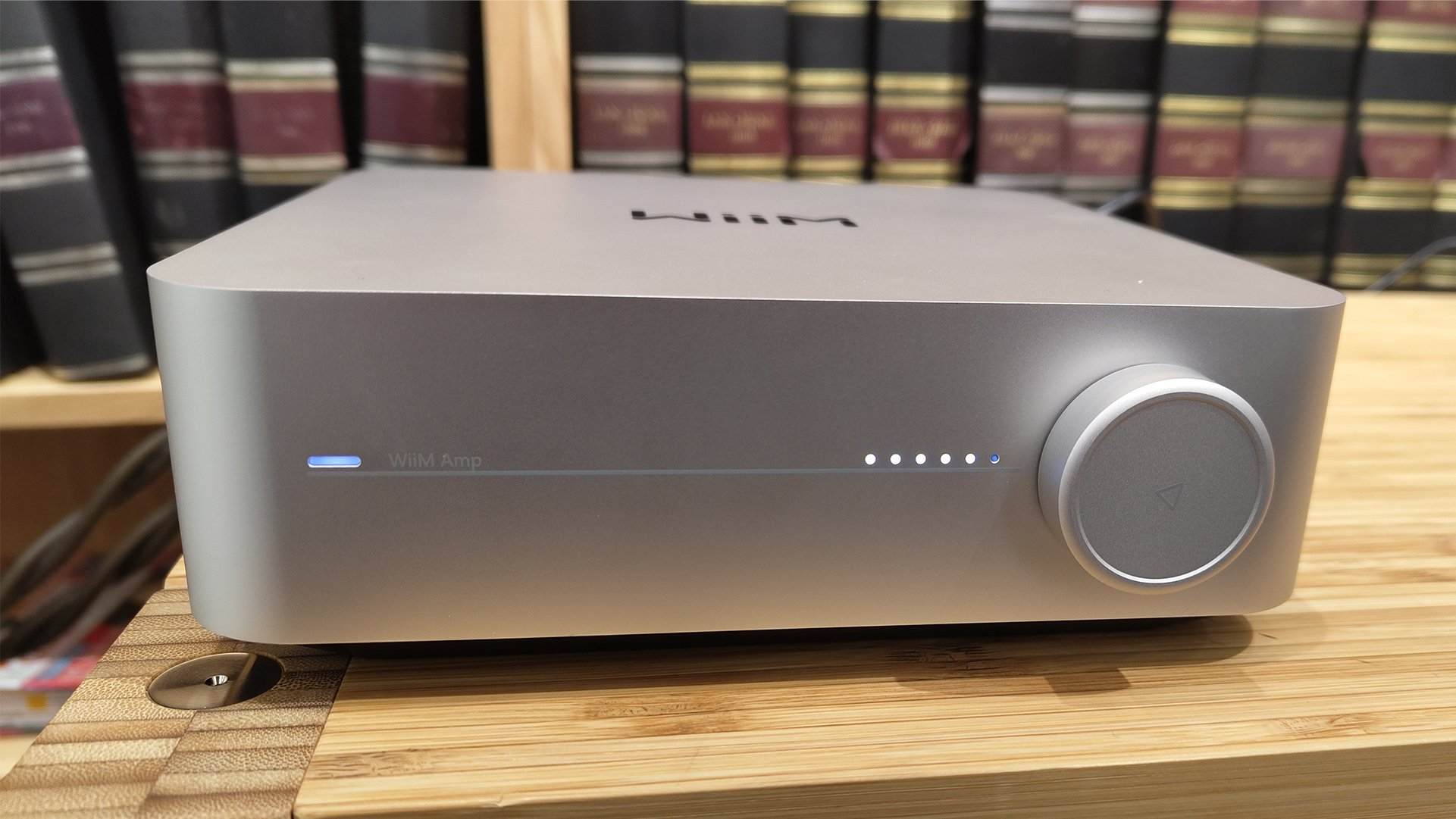
The arrival of the WiiM Pro Plus music streamer felt like something of a moment, as very rarely have we seen a budget streamer cost so little yet still sound so good. Like the popular caffeine supplement with which it shares its name, the Pro Plus has proven capable of giving your music a proper shot in the arm.
The next WiiM product has been much-anticipated, and it’s here in the form of the rather simply named WiiM Amp. That rather functional moniker belies the WiiM Amp’s versatile nature; not only does it feature streaming built in as standard, but this just-add-speakers unit also provides your system with amplification, making it one of the most affordable streaming systems we’ve ever seen. Thanks to its titchy price, we could be looking at a seriously disruptive player in the world of affordable, democratised hi-fi.
Price
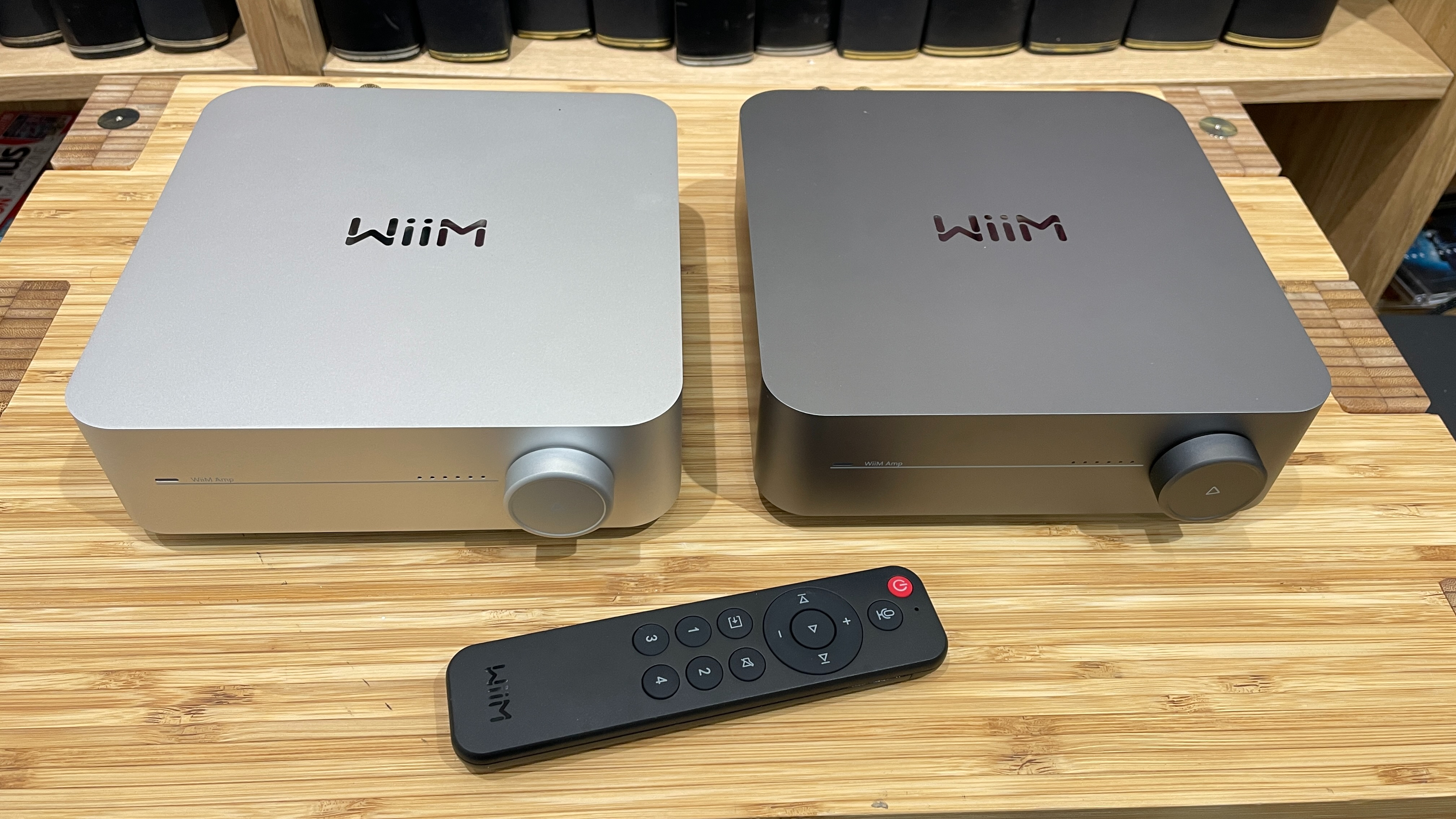
The WiiM Amp will currently set you back £319 / $ 299 / AU$495, making it one of the most affordable and accessible streaming amplifiers anywhere on the market today. There are virtually no “just add speakers” alternatives around at this price elsewhere, and you’ll have to spend more on something like the Bluesound Powernode Edge (tested at £599 / $649 / AU$1199) or the Technics SA-C600 (tested at £899 / $999 / AU$1749) to get a similar package that does it all from a single box.
Build & design
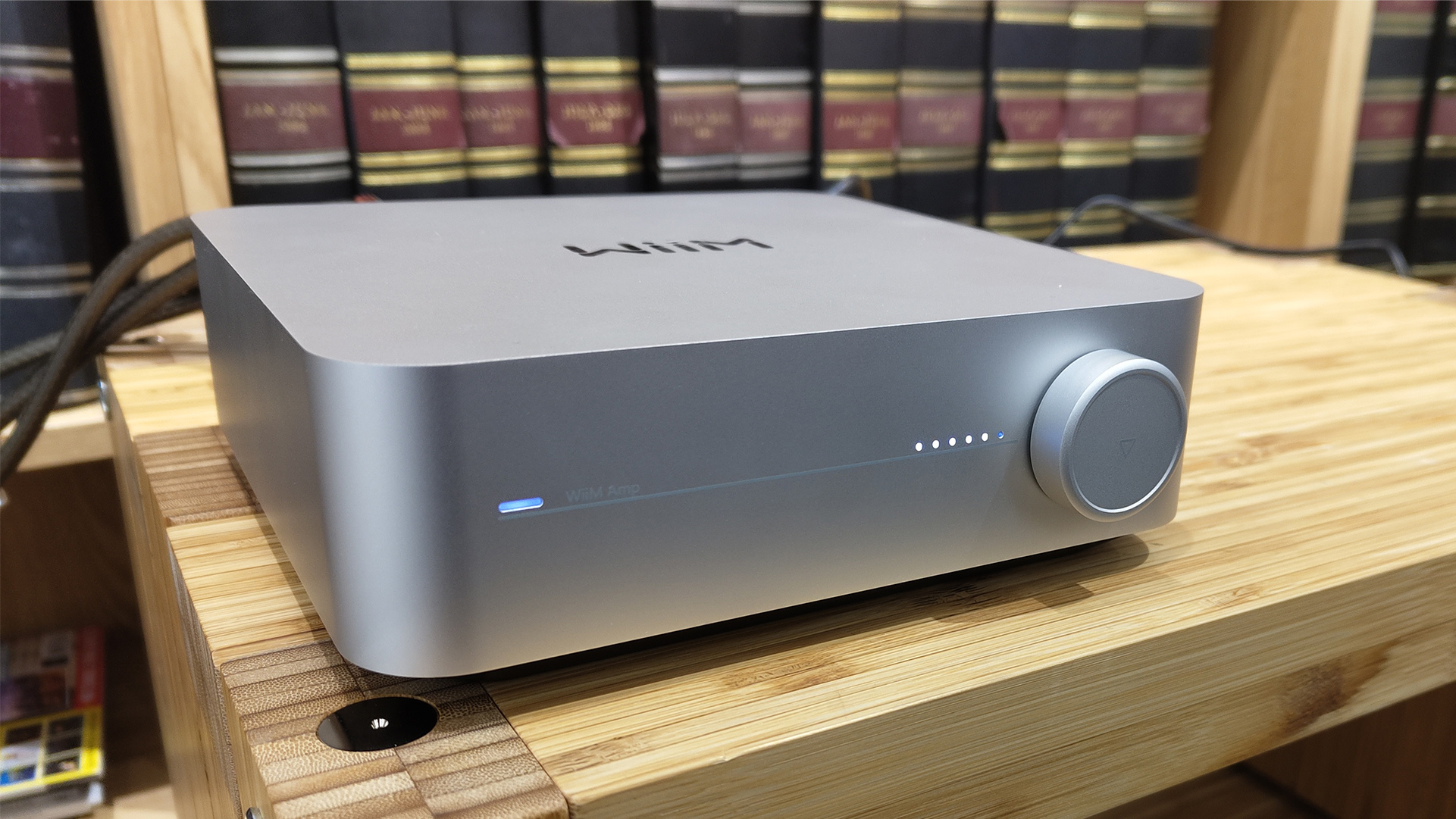
Design-wise, the WiiM Amp keeps things simple, compact and surprisingly classy. Available in a choice of two colours – silver or a darker space grey – the dinky box boasts dimensions of just 63 x 190 x 190mm, making for a compact solution that will nestle nicely within any budding hi-fi set-up without taking up buckets of space.
For the price paid, we’re genuinely impressed by what’s on offer. Even if you told us that the WiiM Amp retailed at a far higher price, we’d have no problem in believing you; it’s clean, solid and strikingly well-constructed, with a smooth, tactile exterior of a quality that we simply don’t expect to find at this level. Run your hand over the exterior shell or flip the unit around to see the back terminals and you’ll struggle to convince yourself that you’re handling one of the cheapest products of its type anywhere in the hi-fi world.
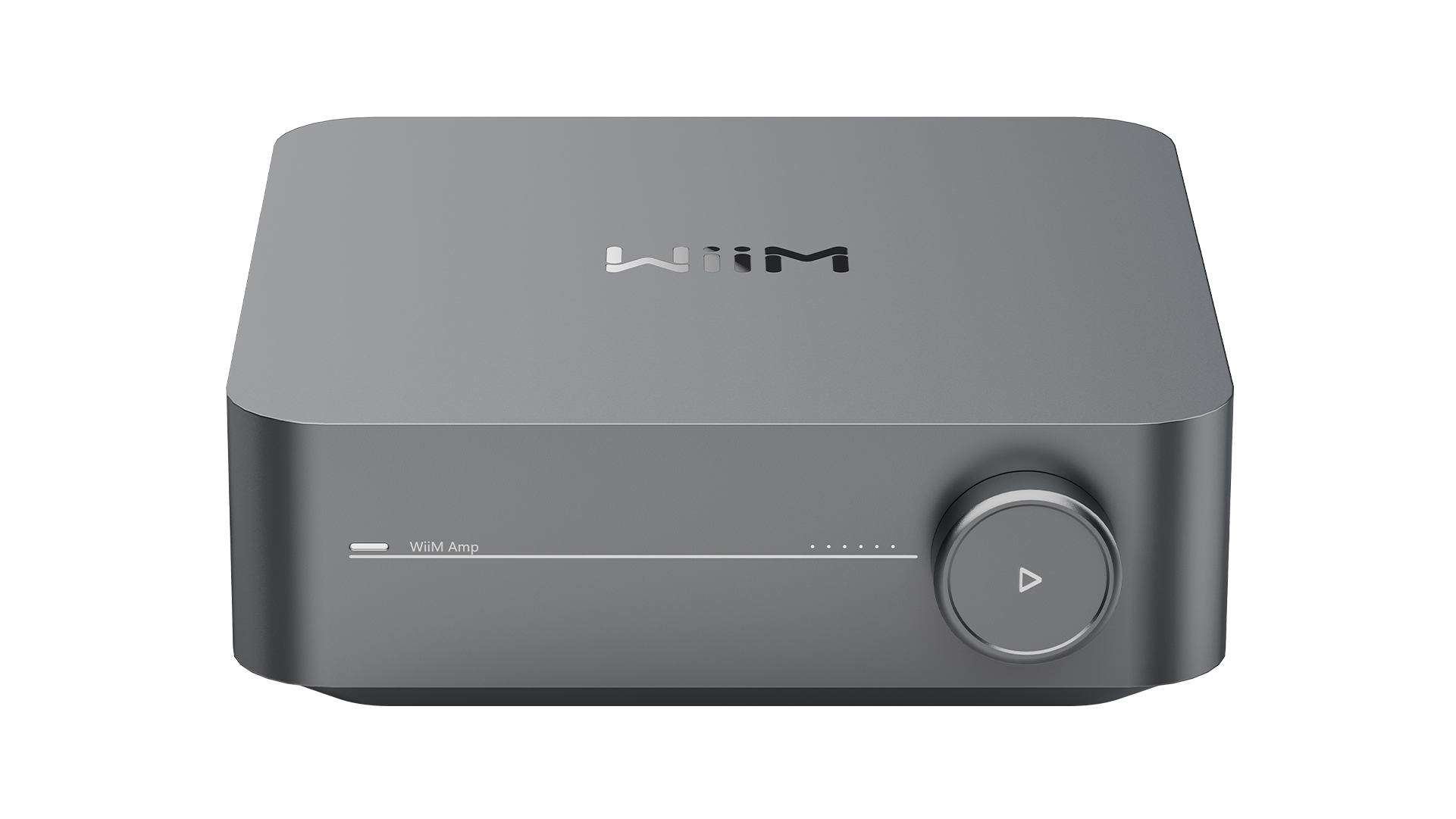
Sources: Bluetooth 5.1, Spotify Connect, AirPlay 2, Alexa Cast, Tidal Connect, Chromecast, DNLA, TuneIn internet radio, Amazon Music, Qobuz, Deezer
Network: Wi-fi, ethernet
Inputs: HDMI ARC, Optical, Line level
Outputs: Sub out
Headphone output: No (Bluetooth available)
Max file resolution: 24-bit/192kHz
Dimensions (hwd): 63 x 190 x 190mm
Weight: 1.84kg
Finishes: x 2 (silver, space grey)
Things are admittedly a little simpler in terms of on-unit buttons and controls, but that’s no bad thing. The WiiM Amp offers a larger volume knob which can be pressed in to play/pause the current track or held down to put the unit into pairing mode – a process, by the way, that feels as easy and seamless as you could hope. Six small LEDs show how loud your music is blaring, while a separate light on the far left of the console acts as a general connectivity and source indicator.
In terms of physical connections, you’ve got your standard speaker terminals sitting alongside a line-level input, a subwoofer output and even an HDMI ARC port for hooking up to your TV, although we perhaps would have liked another analogue input to give the choice of connecting, say, a CD player and a turntable simultaneously. You can connect to your home network via a wired or wireless connection, and while there’s no physical headphone output, you can transmit Bluetooth from the unit if you want a more direct listening experience. The inclusion of two-way Bluetooth is yet another string to the WiiM Amp’s bow, and, when seamlessly hooked up to a pair of Bose QuietComfort Ultra Earbuds, the resulting sound is stable and consistent with what we hear through the speaker outputs.

There’s even a remote control, and while some more high-end hi-fi products often furnish us with lamentably cheap, even naff handsets, WiiM’s effort is very much the real deal, with a tactile, smooth finish that feels very much in keeping with the main unit itself. If you need a bit more depth than the pretty standard play, pause, track skip, mute, volume adjustment and Alexa button provided, you’ll have control of your bargain new amp through the dedicated WiiM control app. There’s no full display on the unit, naturally, so the app will likely be where you’ll do most of your interacting; picking your chosen streaming service, choosing your source, adjusting the volume etc.
Features
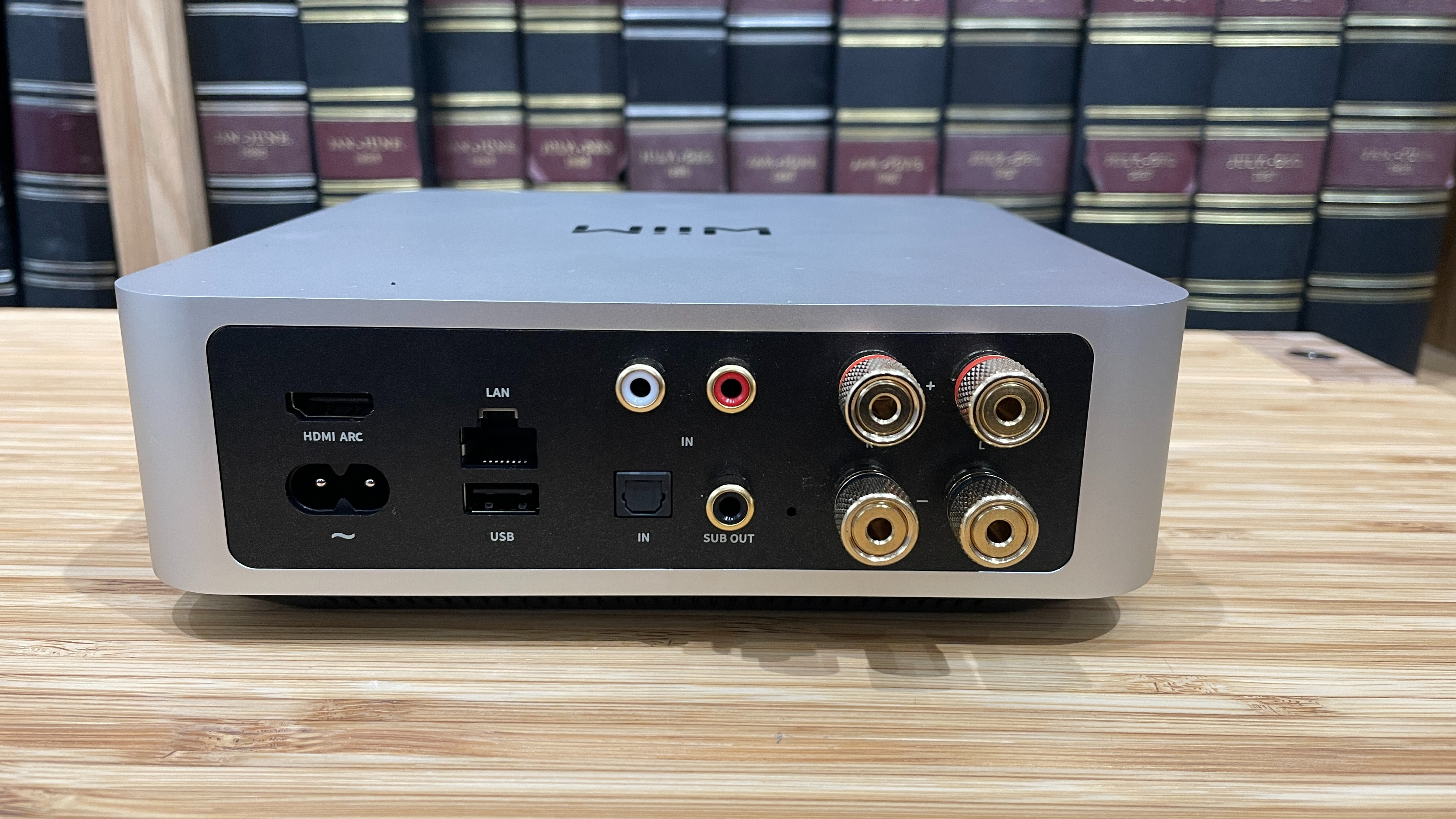
If you thought that paying such a meagre price for a network streamer-cum-amp would mean diminished options, you thought wrong. The WiiM boasts compatibility with a handsome array of services including Google Chromecast, AirPlay 2, Tidal, Spotify Connect and Amazon Music, and you can naturally hook up to your source via Bluetooth. There’s even built-in internet radio for playing across the myriad of stations scattered across the globe, plus the capacity to recognise and play music files stored on your local network, such as on NAS devices.
As is commonplace for products such as these, the onboard app is the beating heart of the system for control and customisation. WiiM’s provided platform is impressively comprehensive and intuitive, too, and while we’ve often found that our favourite streaming services never feel as smooth or well laid out when played through third-party platforms, the WiiM app is responsive and simple to use. Again, it’s far better than it has any right to be, considering the price.
The budget streaming system packs in a Class D amplifier which offers 60 watts of power per channel at 8 ohms and has an ESS Sabre ES9018 DAC chip that WiiM boasts can handle hi-res files up to 24-bit/192kHz. WiiM also claims that its ESS 32-bit HyperStream DAC architecture serves up "industry-leading low distortion and wide dynamic range”, all of which rather nicely leads us to the key part of this review: sound.
Sound
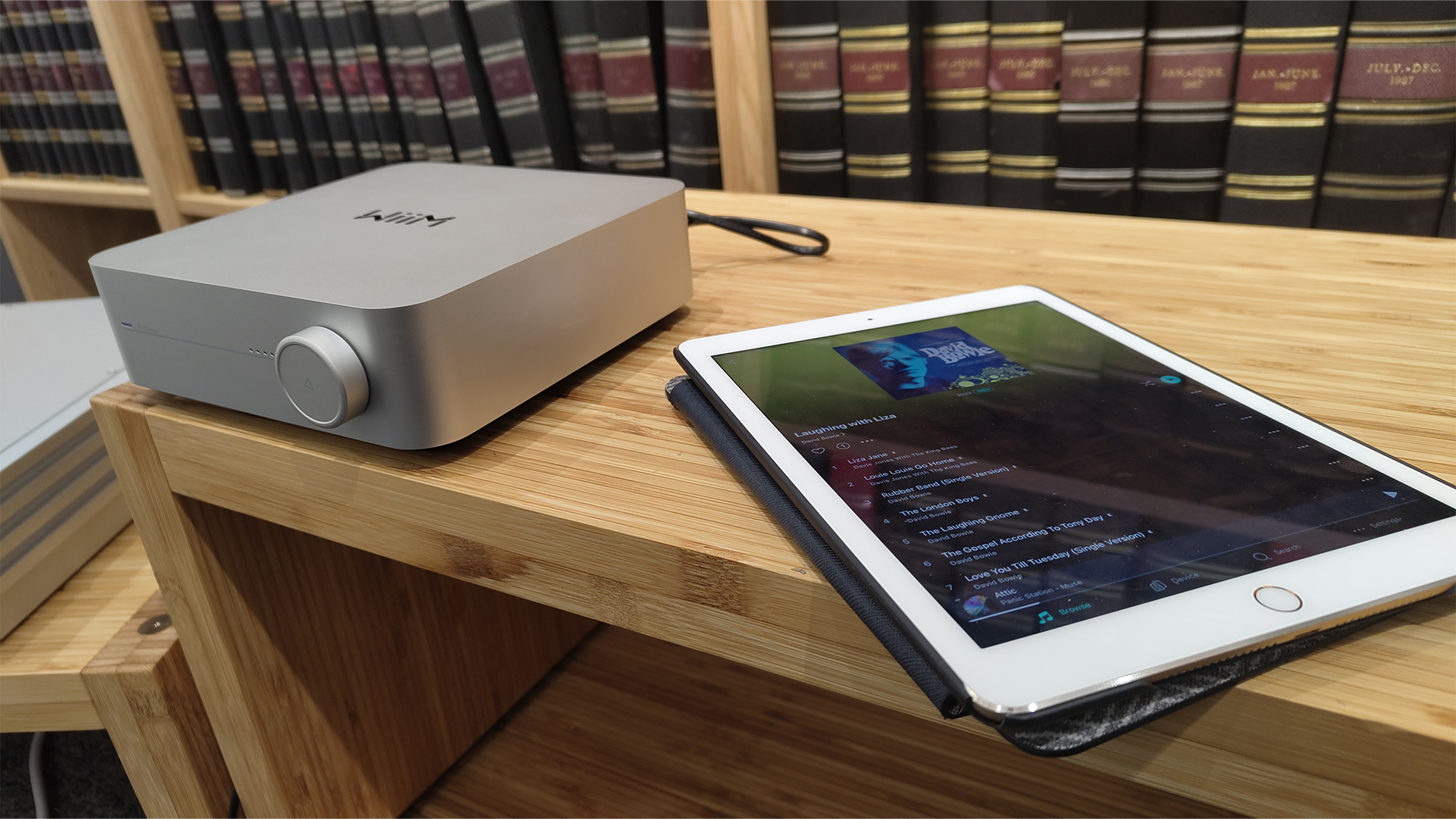
The streaming amplifier doesn’t lack for enthusiasm, we’ll certainly give it that. A Tidal stream of alt-J’s Dissolve Me comes across as forward and confident to our ears, especially when the WiiM Amp is paired up with the agile, expressive articulation of our Dali Oberon 1 standmounts. The industrial drum sounds clank and skitter with plenty of texture, with the distinctive timbre of lead singer Joe Newman’s nasal delivery coming through with character and vitality.
Similarly, there’s life and energy provided when we switch over to The xx’s Islands, a solid test track that makes for a good probe of a system’s capacity to pick out nuance and detail while also giving the music space to blossom. The WiiM Amp’s attempt is admirable, resisting the urge to muddle the various musical components, supplying punch, propulsion and pace as the music tentatively builds and keenly draws on the energy provided by the compact budget streaming amp.
While such tracks may reveal the WiiM Amp’s strengths, they’re perfectly positioned to expose its most pressing weaknesses. Simply put, the Amp lacks true sonic transparency, colouring music with its affirmative, forward reproduction at the expense of truly unveiling the distinct characteristics of each recording it gamely belts out. That alt-J tune might initially strike you as being pleasingly forward and eager, yet there’s a lack of dynamic contrast between moments of loudness and softness which can tend to flatten out the entire composition. Listen to the percussive passages and you’ll hear how the natural way a human being strikes a drum with variations in tone, force and weight are lost in favour of a more uniform presentation – as though played by machine rather than man.
This doesn’t change when we switch out the partnering equipment. Whether it’s dropping the Dali Oberons out in favour of the superb Wharfedale Diamond 12.1 or switching the source player to the excellent Arcam CD5, the common factor remains the WiiM Amp’s tendency to flatten dynamic peaks and troughs in the pursuit of a singular sonic ethos. We want light and shade to add life and interest to a CD recording of Jamiroquai’s (Don’t) Give Hate A Chance, but the WiiM is too keen on pursuing its own lane to truly bring out those contrasting funky flavours. To mix our metaphors, we want sonic peaks and valleys to rival the Swiss Alps – WiiM’s effort is decent, but it rather puts us more in mind of the flat Dutch countryside.
That feels like the WiiM’s greatest limitation, and although we understand that this is a budget product and always judge accordingly, we still expect something aimed at a hi-fi audience to have a keen focus on producing what we would consider a “hi-fi” sound. The WiiM Amp lacks the transparency and deft musical understanding to be a truly engaging listen.
Verdict
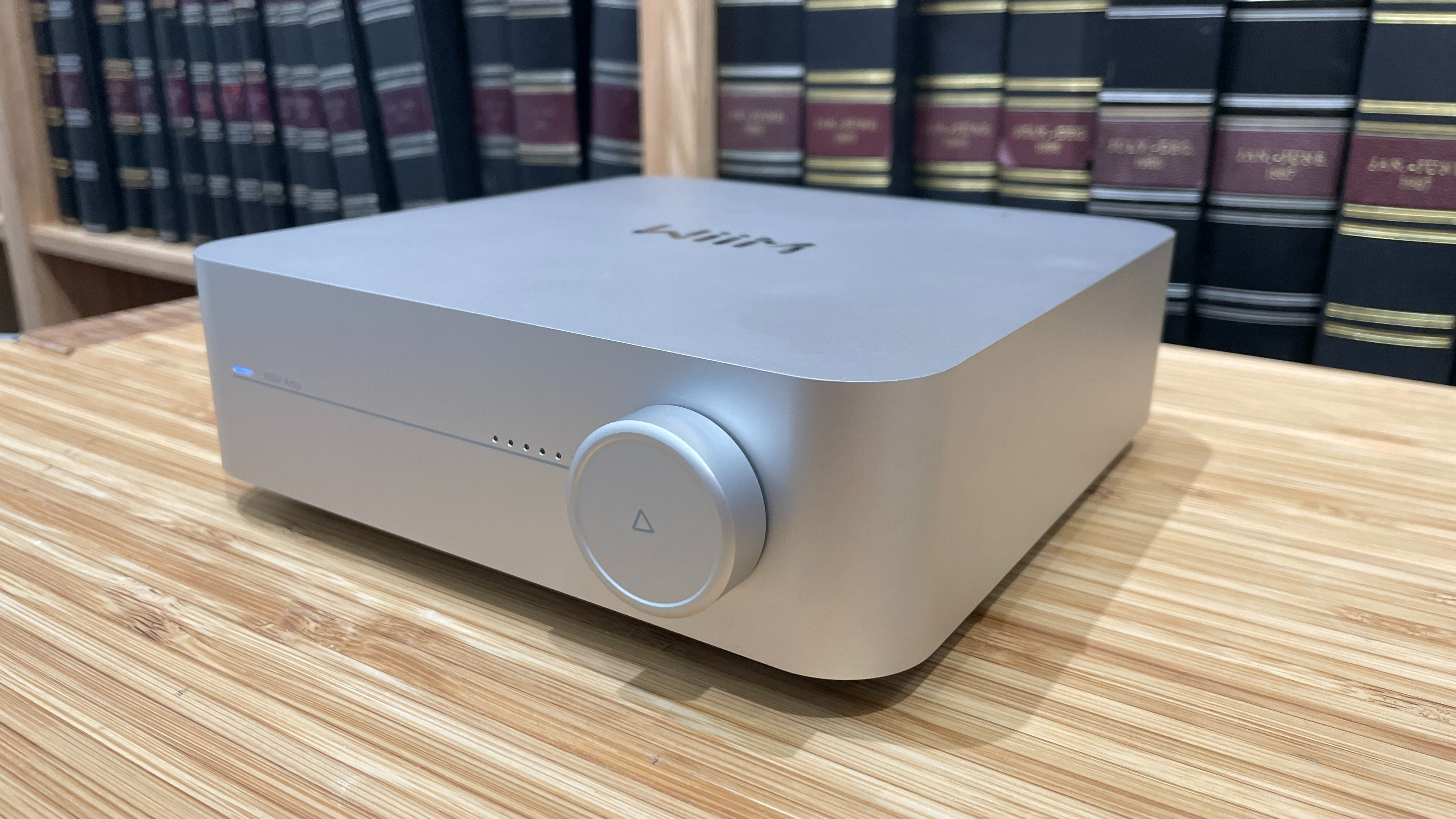
The WiiM Amp is made attractive by virtue of its solid connectivity options and pleasing, compact build. At this level, few units come close to its impressive feature set and startling versatility.
Sonically, though, it’s limited. If you want a convenient, integrated system at a similar price, we’d recommend considering a wireless speaker system such as the KEF LSX II LT or Triangle AIO Twin, or, if you are happy to swap wi-fi streaming ability for CD replay and radio, the compact convenience of the Denon D-M41DAB hi-fi microsystem instead.
SCORES
- Sound 3
- Features 5
- Build 5
MORE:
Read our review of the Denon D-M41DAB
Also consider the Bluesound Powernode Edge
Read our Elac Debut ConneX DCB41 review
Best stereo amplifiers: the best integrated amps for every budget







